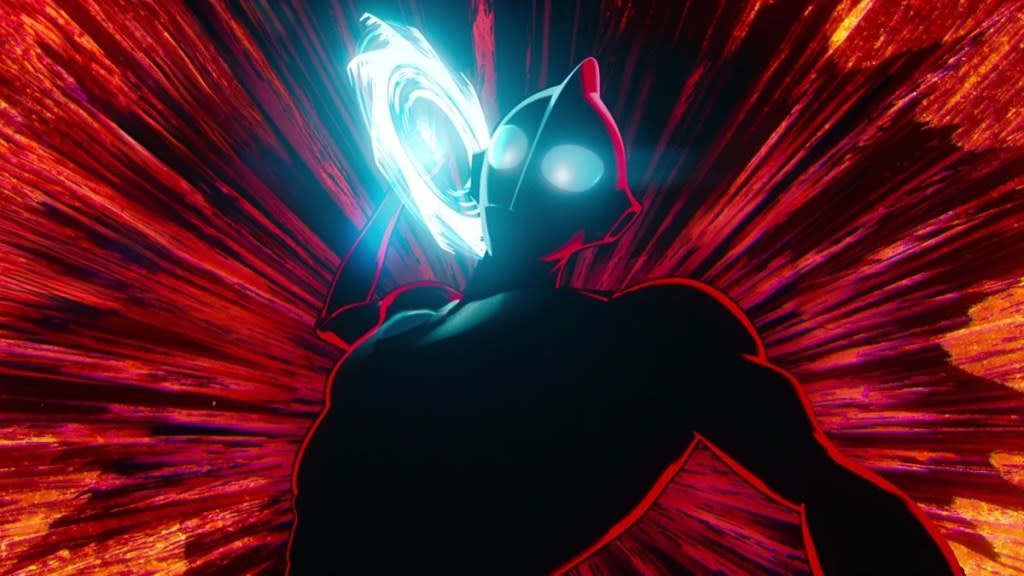‘Ultraman: Rising’ Review: Netflix Adaptation Is One of the Best Superhero Movies in Years

“Ultraman” is one of the most iconic and popular characters in Japanese history, running since 1966 with countless reboots and sequels across different mediums. Though it hasn’t really broken out in the West, we’ve seen titles like “Shin Ultraman” and the “Ultraman” adjacent anime “SSSS. Gridman” gain popularity outside of Japan. Now comes “Ultraman: Rising,” not only a spectacular addition to the franchise, but one of the best superhero movies in a long time and a strong contender for best animated movie of the year.
Directed by Shannon Tindle (in his feature directorial debut) and John Aoshima, and co-written by Tindle and Marc Haimes, the Netflix original film reinvents the “Ultraman” mythos.
Here we don’t follow an alien superhero, but rather a young man named Ken Sato (Christopher Sean), son of the original Ultraman, who returns to Japan after years in America to live a double life as a superhero and a baseball superstar. He’s arrogant, he’s egotistical, he’s a good athlete, but he’s angry and resentful toward his dad, Professor Sato (Gedde Watanabe), for placing this responsibility on him — and for failing to prevent the disappearance of Ken’s mother during a kaiju attack. An already busy and complicated life gets even more hectic when Ken reluctantly adopts Emi, a baby kaiju, after defeating her mother.
The story of an egotistical rich guy forced to care about others as he learns what it means to be a superhero was the bread and butter of early MCU movies — Ken even has an AI assistant that’s his equivalent of Jarvis, named Mina (Tamlyn Tomita). But “Ultraman: Rising” understands that simplicity can lead to universality, and the simple premise is what makes it easier to translate the “Ultraman” lore to audiences unfamiliar with the franchise, making this a perfect entry for newcomers.
This is a superhero story but not an origin story, and the script smartly avoids over-explaining the character and what makes him different — like the timer that allows him to transform into Ultraman but only for a few minutes at a time, or the science of the kaiju. Instead, the film lets the world speak for itself.
For longtime fans of “Ultraman,” the movie feels like a natural extension and continuation of the mythos, with plenty of references to old foes, stories and powers, all treated with reverence and love. That the film follows Japanese characters and is set in Tokyo helps avoid the biggest and most common hurdles in adaptations of Japanese franchises. There is no whitewashing, as the cast is Japanese American, and there is no forced translation of concepts or names in order to move the action elsewhere. Instead, it’s like watching a brand new entry in the “Ultraman” franchise, just told from a different perspective.
The biggest addition to the franchise is the focus on parenthood, and the relationship between Ken and Emi. This is the emotional crux of the film, and where it stands out from the crowded pack of superhero films. Ken reluctantly takes care of a child and struggles to find balance while learning what Ultraman is meant to be, and it’s effective at pulling at the heart strings. Tindle is no stranger to using animation to tell highly emotional stories, whether it’s with “Kubo and the Two Strings” or “Lost Ollie,” but “Ultraman: Rising” is the story he’s been slowly building toward, and it pays off.
This last bit is important, because even as a CG animated movie, “Ultraman: Rising” is still very much a tokusatsu movie, a love letter to every aspect of the genre, whether it’s the giant monsters, giant heroes, or robots. Kaiko Murayama’s angular and elongated designs make the characters and creatures look different from both other animated features and other kaiju movies, while still very much feeling at home within the long history of “Ultraman.” Granted, there’s still plenty of kaiju action and Tindle recognizes that the real stars of the franchise are the monsters. If the first “Spider-Verse” felt like the start of something new, then this feels like the arrival of the next step in blockbuster animation. ILM’s first movie since 2015’s “Strange Magic” (and the Oscar-winning “Rango” in 2011) proves they’ve still got it.
“Ultraman: Rising” is filled with striking shots designed to become wallpapers or turned into collectible prints. VFX supervisor Hayden Jones and animation supervisor Mathieu Vig understand the power of a good pose, taking aesthetic inspiration from manga and anime. Echoes of “Akira” and “Neon Genesis Evangelion” (itself heavily inspired by “Ultraman”) inform the dazzling and memorable stances and shots, not just in the fight scenes (of which there are plenty, and are all stunning) but also in the emotional scenes, like a simple yet gorgeous shot of Ken holding Emi at night, with the ocean and a crescent moon behind them. Indeed, it’s a movie full of vibrant colors, a world like no other, but perhaps most impressive is how clear everything looks. The lighting in “Ultraman: Rising” is spectacular, with plenty of nighttime scenes coming across as clear and vibrant, which is especially unique in an era of streaming where every movie and TV show is too dark.
“Ultraman: Rising” is a contender for best animated movie of the year, one of the best superhero movies in years, and one of the all-time greatest American adaptations of a Japanese franchise. Whether you’ve never even heard of “Ultraman” or you clearly remember where you were when the Ultra Brothers were crucified, this is a film worth watching.
“Ultraman: Rising” premieres on Netflix on June 14.
The post ‘Ultraman: Rising’ Review: Netflix Adaptation Is One of the Best Superhero Movies in Years appeared first on TheWrap.

 Yahoo News
Yahoo News 
